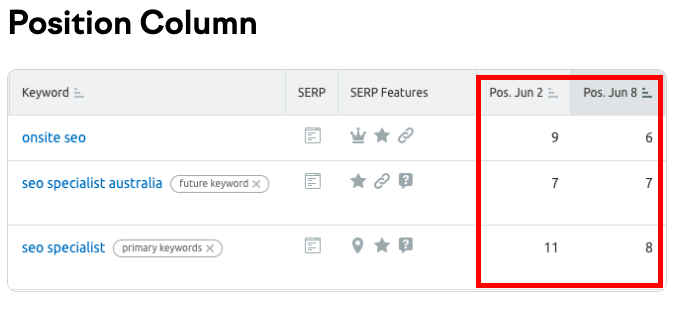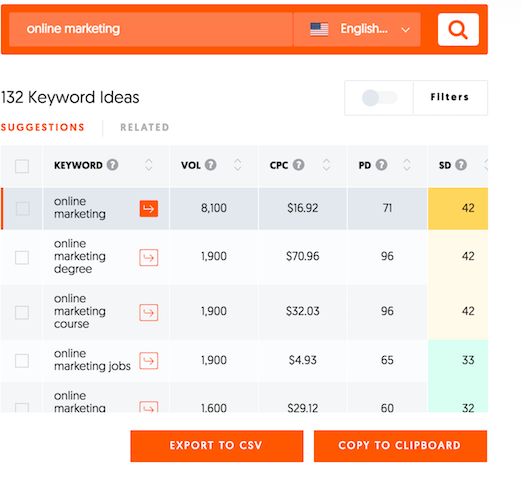An important part of SEO involves ranking websites based on keywords. SEO professionals will conduct keyword research to find their target keywords, incorporate them into their content, then track whether their websites begin to rank for their target keywords.
If you want to track your rankings, there are several ways to get started. You can use ranking data to measure the success of your SEO campaigns or share progress with your customers. In this guide, we will share some of our tools that can help you track your keyword rankings.
I do not offer affiliate marketing services and anyone searching for terms like “SEO analyst” wants to do SEO themselves as opposed to paying my agency to do it for them.
Even terms like “statistical significance calculator” don’t increase revenue. Anyone finding this may want to see how their A/B tests are performing versus hiring my agency to run the tests for them.
Why should you keep track of your keyword positions?
Keeping track of your keyword positions is important if you want to measure the success of your SEO strategy. You can also use keyword tracking to determine how well your competitors’ strategies are performing or whether they are ranking for your target keywords.
If your competitors have an advantage, you may need to refocus your efforts, refresh or improve your content, or address other parts of your strategy.
Position tracking can alert you if a competitor has launched a campaign that targets the same keywords as you. If they suddenly start moving up the ranking tree, you know they’ve started targeting similar keywords and phrases.
How to track keyword ranking:
Via Ubersuggest:
You probably already have some ideas that are a good fit for your business. I want you to type them into Ubersuggest.
Ubersuggest will show how many people search for that keyword as well as SEO difficulty and paid difficulty in a particular area.
Also, if you click on the “Keyword measure” navigation option, you will see a long list of keyword measures.
What you should be looking for are keywords that have a high paid difficulty, which means that the keyword is so valuable that many people compete for paid ad space.
In addition to looking at paid difficulty numbers, you’ll want to find keywords that have a low SEO difficulty score.
When a keyword meets those 2 requirements, it means that it is easy for it to rank and people find it valuable enough to buy ads on the keyword. And if they find that the ad is valuable enough for people to buy, that means the traffic is turning into customers.
This is more important than just finding popular keywords because traffic doesn’t always equal sales.
Are you choosing the right area?
When you are doing keyword research, you need to think about the areas. This is also the main reason I integrated regions within Ubersuggest.
You cannot just focus on keywords that have high paying difficulty and low SEO difficulty. You need to focus on the countries where most of your customer base is.
Now, you know SEO is competitive and it takes a while to rank. So if he can get into the emerging areas that he knows he wants to target in a few years, he should search for those keywords right away.
It takes a while for people to see it, but the reason I did such a good job at choosing the right terms is that I focus on areas that are not yet ready for my company, but the next 5 to 10 There will be more years.
I know it sounds strange, but in order to do well you need long-term goals and a strategic approach to your business.
But how do I rank number 1?
Once you have a list of keywords, it’s time to focus on creating content and ranking at the top of Google. But you already know that.
The real question is, how do you rank higher?
Well, I have a lot of blog posts on that. Here are some of my favorites that will help you:
- How to Dominate Google – There are over 200 factors in Google’s algorithm. There’s a whole lot more for you to follow. In this post, you will find a 4-step process that will help you climb to the top. This has made SEO more viable because there’s no way you’re going to focus on all 200 of Google’s algorithmic factors.
- How to Build Links When No One Will Link to You – Link building is still a big part of Google’s algorithm. This post explains how to do link building when no one knows you and you don’t have money to spend on link building.
- The Future of SEO – If you want to rank high and maintain your ranking, you need to know the future of search and how algorithms are going to change.
- How I Think About SEO – This post breaks down my personal SEO strategy for SUPER310.IN. If you copy it, you’ll do well. Check out the brand hack I mentioned in that post, it helps a lot with rankings.
Via Semrush:
Understanding your status tracking report:
Once you’ve set up your position tracking report, you’ll want to check it continuously to track your rankings. The position tracking tool tracks keywords daily so you stay up-to-date on the latest changes.
Understanding your reported results can help you develop more effective strategies going forward. You will know from the first glance which keywords need more attention.
We’ll use a report from an SEO marketing agency based in Melbourne, Australia, as an example. When reviewing your report, you can consider the following:

This metric compares the keyword ranking position between the two dates you set. You can use it to track campaign progress by setting campaign start and end dates. This column reflects any status changes that occurred during those dates.
In this example, the agency is ranked 6th for “Onsite SEO”, 7th for “SEO Expert Australia”, and 8th for “SEO Expert”. These positions are shown 6 days apart.
Volume Column:

This column shows you the amount of searches for your keywords per month, set per keyword. You can adjust your SEO campaign if you notice that the amount of search terms is decreasing over time, indicating that fewer people are searching for these terms.
However, it can also mean less competition, so you can also increase your work on those keywords to get them ranked again.
SEMrush is my favorite tool on this list as it is a complete solution for keyword checking.
You can enter the URL of your website or the personal URL of a blog post, and it will show you what keywords you are currently ranking for. You can further click on any of the resulting keywords to check keyword competition and other details.
If you’ve ever wondered, “What keywords do I rank for?”, SEMrush has got you covered. Simply add your domain name in the URL field, and it will show you all the keywords you are currently ranking for.
SEMrush is professional software that’s easy to use, and you can try it out for free for a couple of weeks before you decide whether or not to subscribe.
Conclusion:
Of all the keyword rank checker tools on this list, SEMrush is my top choice for checking keyword position in Google and Bing searches. I am sure you will love it too, as it also offers other features such as backlink checker, a full site audit, and some other really cool stuff.







Hey I loved the way you shared this information with us. I would say that please continue these efforts and we want to hear more from you. Well if you get time you must checkout my website DedicatedHosting4u.com